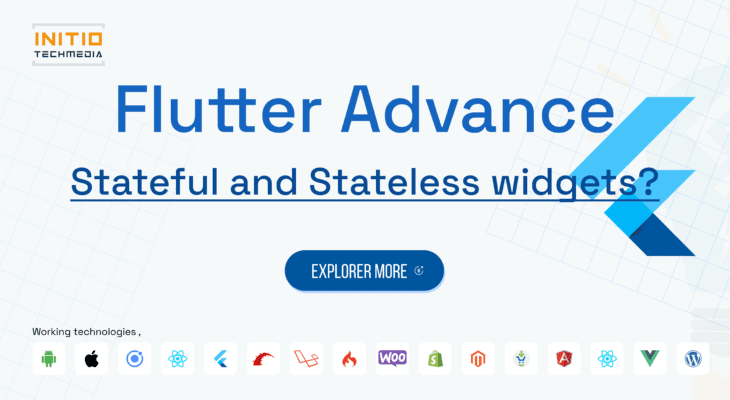Leading Mobile & web Development company which is providing Ready to publish apps & on demands application in Global Bussiness.
- 908, B Square 2, Ambli Rd, near Hotel Double tree Hilton, Vikram NagarAhmedabad-380054, Gujarat, India
- (+91) 8758432204Give us a call
- contact@initiotechmedia.com24/7 online support

What do you understand by the Stateful and Stateless widgets?
- payal patel
- April 27, 2023
- 0
In Flutter, widgets are the basic building blocks for creating user interfaces. Widgets can be classified as either Stateful or Stateless based on whether they maintain state or not.
Stateless Widgets: Stateless widgets are widgets that do not have any mutable state. This means that once a Stateless widget is built, it cannot change its internal state. Stateless widgets are useful for displaying static content, such as text, images, or icons. They are lightweight and fast to build because they do not need to manage any internal state.
Stateful Widgets: Stateful widgets are widgets that can maintain mutable state. This means that the internal state of a Stateful widget can change over time. Stateful widgets are useful for displaying dynamic content, such as user input, animations, or changing data. When the state of a Stateful widget changes, Flutter rebuilds the widget to reflect the new state.
Stateful widgets are built using two classes: StatefulWidget and State. The StatefulWidget class is responsible for creating an instance of the State class, which is where the mutable state is stored. Whenever the state of a Stateful widget changes, the State object is notified, and the build() method is called to rebuild the widget with the new state.
In summary, Stateful and Stateless widgets are two types of widgets in Flutter that differ in their ability to maintain mutable state. Stateless widgets are used for displaying static content, while Stateful widgets are used for displaying dynamic content that can change over time. Understanding the difference between Stateful and Stateless widgets is important when building Flutter apps, as it can help you choose the right type of widget for the job.
WhatsApp us

